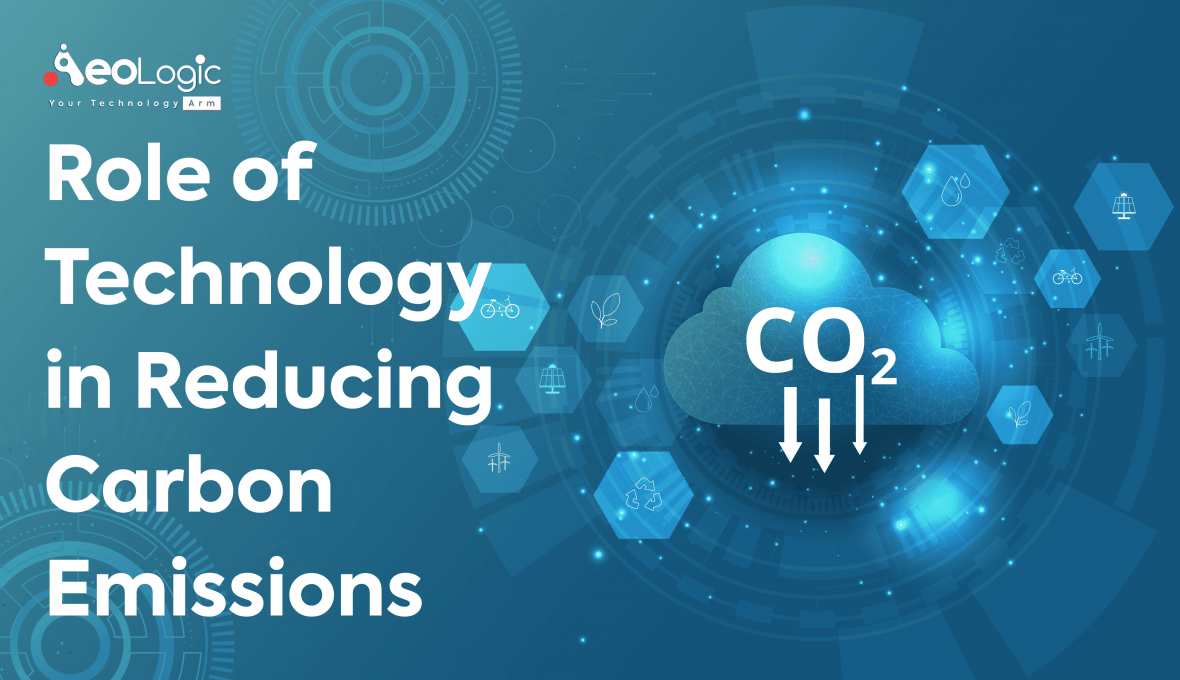Sustainable development and carbon emission reduction are the major objective of the times with any industrial production. As a matter of fact, probing new inventions with a purpose to carbon-neutral materials and green-fueled technologies. Let’s see the role of technology in reducing carbon emissions.
If the world is to have an incoceivable chance at confining global warming to 1.5°C to help the worst counter accusations of climate change, global carbon dioxide (CO2) emissions are needed to reach net zero by the early 2050s, according to the Intergovernmental Panel on Climate Change. It is particularly critical to identify ways to decrease emissions from the energy industry. Since, it is responsible for around three-quarters of global greenhouse gas emissions. Technology and technological innovation has formerly been a major enabler of eliminating emissions from energy systems around the world. However, if we are to reach global net zero targets, this purpose needs to accelerate.
Also read: The Role of Technology in Sustainable Development
Role of Technology in Reducing Carbon Emissions
Zero-Carbon Cement
University of Colorado Boulder engineers are integrating microalgae for making carbon-neutral cement. Consequently, cement production is accountable for 7% of global greenhouse gas emissions. The most-produced material on earth, concrete. Cement is a part of concrete. Usually, it is made using limestone that is quarried and burned at very high temperatures. Thereby, generating gigatons of carbon dioxide every year. The CU Boulder team are having an objective for substituting the limestone with calcium carbonate. It is derivative of photosynthetic microalgae called coccolithophores. This type of algae naturally generates the substance. It is very much similar to coral builds reefs, taking in carbon dioxide and keeping it in the rock. Cultivating Coccolithophores are simpler in comparison, and their products could be promptly unified into the present cement production processes.
Carbon Trapper
Using carbon material from a simple saltwater solution and recycled coconut shells, University of Cambridge researchers devised a coin-sized supercapacitor that can take CO2 from the air.
Present carbon capture systems are relying on large volumes of solvents for absorbing the greenhouse gas from the atmosphere and large amounts of energy. In order to release it into storage. Supercapacitors — which store energy by transfering electrons between electrodes rather than appyling chemicals — carefuly absorb carbon dioxide from the air, making them a certainly more sustainable, less expensive substitute.
On the other hand, Supercapacitors only absorb carbon dioxide while being charged. Therefore, for enhancing charging time, the Cambridge team alternated a supercapacitor between positive and negative charges and found that doing so doubled the potential of absorbing carbon.
Renewables
In particular wind and solar, renewable energy sources, can offer an generous source of low-carbon electricity contribution. Moreover, with the tendency of 35% of the cumulative emissions reductions needed for the global net zero energy transition by 2050, as per the IEA. The installed capabilities of both wind and solar energy are increasing in all countries over the last 10 years. Whereas, costs have decreased even faster than projected – solar photovoltaic (PV) unit prices reduced in cost by 85% and wind power by 55% between 2010 and 2019. This happened as a consequence of innovation policy and careful technology choices made by governments in several countries over the years.
Nuclear Energy
Nuclear is another significant technology, presently offering almost 30% of the world’s supply of low-carbon electricity. 5% of the emissions reductions under a process that cuts the greenhouse gas emissions to net zero by 2050, according to the IEA, could come from changing from coal and oil to lower-carbon energy sources containing nuclear. Although countries have broadly different views on the importance of nuclear should play in the energy mix, with opposition to the technology usually powered by safety or cost issues. A number of governments are taking a fresh look at nuclear with the ideal of mollifying their emissions and dependence on imported reactionary energies Constant investment in nuclear invention could be bringing advanced nuclear technologies to request. In turn allowing nuclear for delivering emissions reductions not only in the electricity vertical but also in heat and verticals.
Also read: How Does Technology Help Sustainability
Wrapping Up …
The environmental and economic situation for developing a range of existing low-carbon technologies is thorough. Innovation could present new technologies to request in all the parts of the role of technology in reducing carbon emissions discussed. In turn allowing more ambitious decarbonisation pathways. It is a content of concern to decisive policy from governments around the world. In order to unleash the complete eventuality of being and new technology. For delivering the urgently needed transition to global net zero.
Contact us to know more on how you can contribute to the environment.






